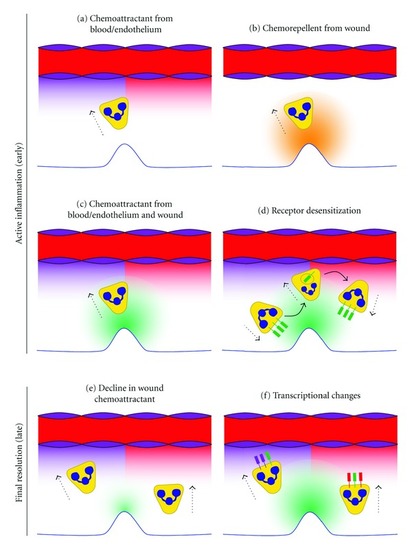Figure 2
- ID
- ZDB-FIG-190723-1239
- Publication
- Starnes et al., 2012 - Neutrophil Reverse Migration Becomes Transparent with Zebrafish
- Other Figures
- All Figure Page
- Back to All Figure Page
|
Proposed mechanisms for reversed migration. This diagram illustrates how chemoattractant gradients from the blood (red), endothelium (purple), and wound (green) or chemorepellent gradients (orange) may influence reverse migration. The color of a chemoattractant receptor matches the gradient to which it responds. (a)–(d) Reverse migration in the early wound response. (a) Demonstration of neutrophil reverse migration towards blood or endothelium-derived chemoattractants. (b) Reverse migration of a neutrophil away from a wound-derived chemorepellent. There could be competition between wound-derived chemoattractants (not shown) and chemorepellents promoting reverse migration, or neutrophils may perform fugetaxis from areas of high chemoattractant concentration. (c) Oscillatory behavior of neutrophils suggests competing gradients of chemoattractants may exist between the wound and vasculature. (d) Receptor desensitization, via internalization or other mechanisms, may allow neutrophils to oscillate between the wound and the vasculature while others are still actively responding to the wound. (e)–(f) Mechanisms that promote resolution of neutrophil-mediated inflammation at wounds. (e) During the healing phase, wounded tissue may gradually produce less neutrophil chemoattractant, shifting the balance to favor reverse migration. (f) Neutrophils that responded to a wound may initiate transcriptional changes favoring reverse migration from the wound. Potential changes include altered expression or sensitivity of chemoattractant receptors. |

